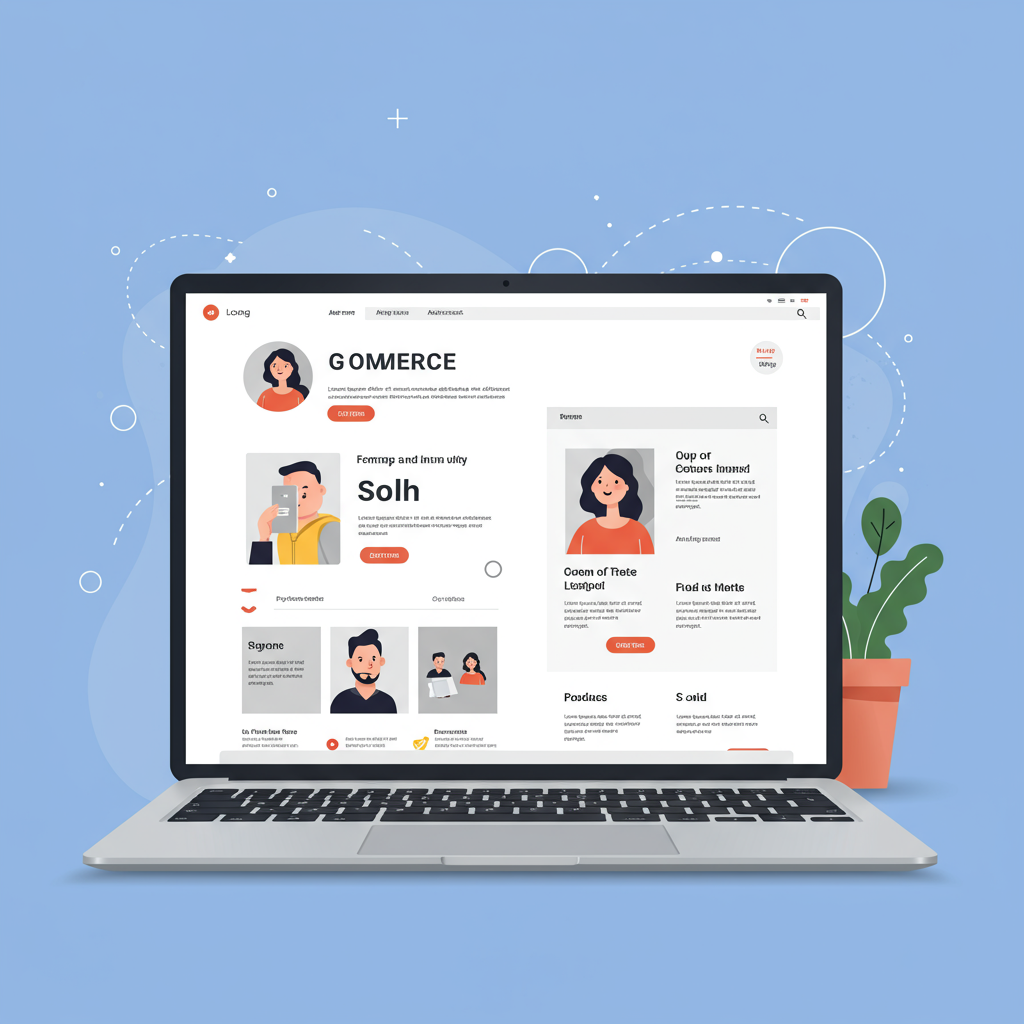Unlock the full potential of your online store’s first impression with these cutting-edge strategies for conversion and engagement.
Hello fellow Shopify merchants! As we look ahead to 2025, the digital landscape continues to evolve at an incredible pace.
Your Shopify store’s homepage isn’t just a digital storefront; it’s the virtual front door to your brand, often the very first impression a potential customer gets.
In today’s competitive e-commerce world, a well-designed, optimized homepage is no longer a luxury—it’s an absolute necessity for converting visitors into loyal customers.
I’ve spent a lot of time analyzing trends and best practices, and I want to share my insights on how you can elevate your Shopify homepage design for 2025.
Our goal here is to create a homepage that not only looks fantastic but also performs exceptionally, driving engagement and sales.
First, let’s talk about the hero section. This is the prime real estate above the fold, and it needs to grab attention instantly.
For 2025, consider dynamic, high-quality video backgrounds or interactive elements that showcase your products in action.
Your main headline should be clear, concise, and immediately communicate your unique selling proposition (USP). What problem do you solve? What makes you different?
Below the hero, intuitive navigation is paramount. Customers should be able to find what they’re looking for within a few clicks, ideally even fewer.
Think about mega menus for larger inventories, clear category labels, and a prominent search bar. Mobile navigation needs to be equally seamless.
Personalization is going to be huge in 2025, driven by AI. Your homepage should dynamically adapt to visitor behavior.
This means showcasing recently viewed items, personalized product recommendations, or even tailored promotions based on their browsing history or demographic data.
Integrating social proof is non-negotiable. Display customer testimonials, star ratings, user-generated content (UGC), or even a live feed of recent purchases.
People trust other people, and seeing positive experiences builds immediate credibility for your brand.
High-quality product imagery and video are more important than ever. Invest in professional photography and consider 3D models or augmented reality (AR) previews where applicable.
These immersive experiences help bridge the gap between online browsing and the physical product, reducing returns and increasing confidence.
Call-to-actions (CTAs) must be clear, compelling, and strategically placed. Use action-oriented language like “Shop Now,” “Discover More,” or “Get Your Free Sample.”
Don’t overwhelm visitors with too many CTAs; prioritize the most important actions you want them to take.
Page speed is a critical factor, not just for user experience but also for SEO. A slow homepage will deter visitors and hurt your search rankings.
Optimize images, leverage browser caching, and minimize unnecessary apps or code that could bog down your site.
Mobile-first design isn’t a trend; it’s the standard. A significant portion of your traffic will come from mobile devices, so ensure your homepage is perfectly responsive and easy to navigate on smaller screens.
Consider the “thumb zone” for interactive elements and ensure text is legible without zooming.
Sustainability and ethical practices are increasingly important to consumers. If these are core to your brand, highlight them prominently on your homepage.
This could be through a dedicated section, trust badges, or even a subtle mention in your hero copy. It resonates deeply with conscious buyers.
Don’t forget about accessibility. Your homepage should be usable by everyone, including those with disabilities.
This means proper alt text for images, keyboard navigation, and sufficient color contrast. It’s not just good practice; it’s often a legal requirement.
Integrating your blog or latest content directly onto the homepage can be a powerful way to engage visitors and establish your brand as a thought leader.
It also provides fresh content for search engines and encourages longer visits.
Finally, remember that your homepage is never truly “finished.” It’s an ongoing process of optimization.
Regularly A/B test different elements—headlines, images, CTAs—to see what resonates best with your audience.
Analyze your analytics to understand user behavior and identify areas for improvement.
By focusing on these key areas, you’ll be well on your way to creating a Shopify homepage that not only looks stunning but also converts effectively in 2025 and beyond.
I believe these tips will give you a solid foundation for success.
What do you think about this article? I’d love to hear your thoughts and any strategies you’ve found successful!






